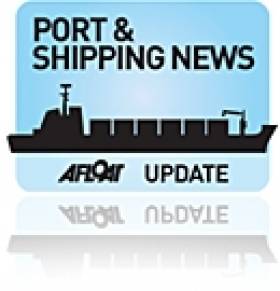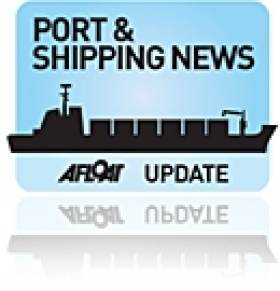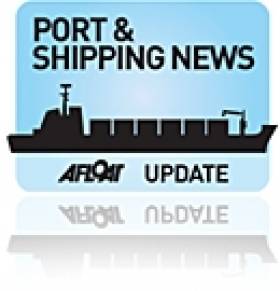Displaying items by tag: Express 1
#Cattleships – The livestock vessel Express 1, which was detained in Fowey for five weeks to undergo urgent maintenance is likely to leave the port this week, writes This Is Cornwall.
The vessel has remained in Fowey since early February after concerns were raised about the state of the ship, including the "appalling" living conditions for the crew. In February, the vessel was towed into the port after it suffered engine failure off the Lizard.
The Maritime and Coastguard Agency (MCA) inspected the 7,000-tonne ship shortly after its arrival and slapped its owners with a detention notice – meaning it couldn't depart until necessary improvements were made.
The vessel which was bound for Waterford, was due to depart last Friday and as previouly reported on Afloat.ie, for only for the MCA to decide it still wasn't ready. For more on this story, click HERE.
Ireland-Libyan Livestock-Carrier Remains Detained following ‘Post-Repair’ Sea Trails
#Cattleships- Express 1, an Ireland-Libya serving livestock-carrier which was detained in February by the UK's Maritime and Coastguard Agency (MCA) has this week been on 'post-repair trails' in the English Channel, writes Jehan Ashmore.
Having anchored overnight off the Cornish port, the Express 1 returned to Fowey this morning after a two-day inspection at sea of the 7,087 tonnes vessel. This was part of the requirments of the inspection as agreed by MCA surveyors.
Commenting to Afloat.ie, a spokesman for the Maritime and Coastguard Agency said: "The Express 1 remains under detention at Fowey following an inspection yesterday. The operator has made some safety improvements, but there are still some issues".
"Further maintenance work will take place to ensure the ship meets safety standards. We will reinspect it once the maintenance work is complete."
As previously reported, Express 1 while on a passage through the English Channel from Germany in February encountered engine-failure in stormy seas and was taken under tow to Fowey. Arising from the incident, there were calls to the Irish Department of Agriculture to revoke the ships livestock-license.
The 100m Express 1 last year she became the first ship to revive the live cattle-trade from Ireland to Libya, such exports have not taken place since 1996, when Libya banned beef imports from the EU, following the outbreak of (BSE) mad cow disease.
On that inaugural sailing she loaded cattle at Belview Port, the main terminal for the port of Waterford from where animal welfare groups protested.
A sister, Atlantic M, earlier this week had docked at Belview Port and the vessel remains at anchorage today off Dunmore East. She was a former vehicle-carrier the Autotransporter and likewise of Express 1 as the Autoline, they originally operated for Hoegh Ugland Auto-Carriers.
The pair later began a career for United European Car Carriers (UECC) and the sisters continued to make frequent calls to Irish ports.
Cattle Ship ‘Express 1’ Reaches Libyan Port
#CattleShip – The recently renamed livestock-carrier Express 1 arrived today at the Libyan port of Misrata, having taken a 9 day voyage from Waterford, writes Jehan Ashmore.
As reported yesterday, the 7,087 tonnes vessel had been renamed while berthed in Waterford (Belview) port, having arrived as Al Mahmoud Express from the Mediterranean.
When loading the 2,900 cattle in Belview Terminal, they had arrived in trucks and were then transferred via a gangway and through the vessel's side loading door.
The trucks could not be driven on board via the former vehicle-carrier (built as the Autoline) which since conversion for the cattle trade, no longer has stern loading doors and outstretching ramp to quayside capability.


























































